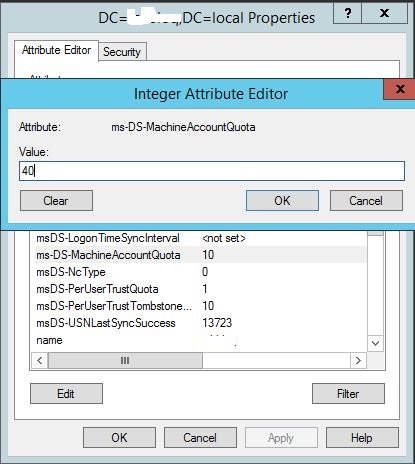


#How to fix join domain user limit full
For the Bind to be successful, the full and correct Distinguished Name (DN) or Searching User UPN must appear in the DN of Searching User text box. If the Search Base text boxes contain values, Fireware uses them for the first Bind. The values of all DC= components used for the Search Base when you configure the Active Directory Primary Server Settingsįor example, if the Search Base is OU=salespeople,OU=corp,OU=seattle,DC=seattle,DC=mywatchguard,DC=com and the user tries to authenticate with the username bsmith, Fireware attempts the first Bind with the username.To construct the user's UPN, Fireware puts these values together in one string: If these text boxes are empty, Fireware sends the first Bind request with the user principal name (UPN) form of the user name, which is usually the same as the user's email address.
#How to fix join domain user limit password
If you add credentials in the DN of Searching User and Password of Searching User text boxes, Fireware uses these credentials for the first Bind to establish permission to access the directory service. If the first Bind fails, the second Bind does not occur. The second Bind verifies the user credentials in the directory. The first Bind establishes permission to access the directory service.

When a user authenticates, Fireware sends two Bind requests to the Active Directory server: one at the start of the authentication process and one at the end. Policy Manager Active Directory Authentication Server Settings If you have problems with user authentication through your Active Directory server and find the message LDAP binding not successful in your log messages, there is likely either an error in your Active Directory server settings, or an error in the Active Directory user account information. Resolve a Bind Error in Active Directory Authentication


 0 kommentar(er)
0 kommentar(er)
